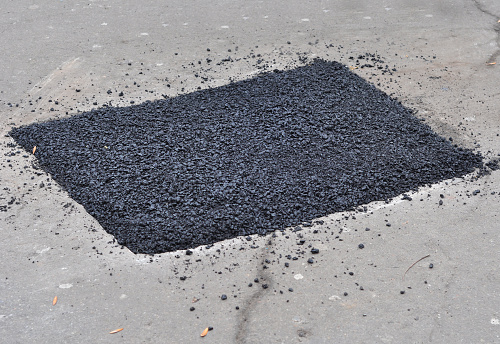Patching for Longevity: Undoubtedly, Asphalt pavement is a super popular choice for roads & parking lots, but it’s not immune to damage. It can suffer from wear and tear due to weather and lots of traffic, which can result in cracks and potholes. But don’t panic; with the right care and patching, you can help your pavement last a long time!
In this post, we’ll explore all you need to know about patching. Plus, here are tips and tricks on how to patch your pavement so it can stay strong and smooth.
Understanding Pavement Damage
Before delving deep into the patching process, it’s essential to understand the different types of pavement damage that can occur. The most common types include:
- Cracking: These are fissures that basically develop on the surface of the pavement due to numerous reasons, such as temperature fluctuations, heavy traffic, or poor construction.
- Potholes: These are holes that form when the pavement’s top layer breaks down, exposing the underlying layers.
- Rutting: This occurs when the pavement develops permanent grooves caused by repeated heavy traffic or poor construction.
Preparing for Patching
 Before patching your pavement, you need to first prepare the surface properly. Here are the go-to steps you should follow:
Before patching your pavement, you need to first prepare the surface properly. Here are the go-to steps you should follow:
- Clean the surface thoroughly: Use a broom or blower to remove any loose debris or dirt on the surface.
- Inspect the pavement: Check for any underlying issues, such as drainage problems or base failure. These issues must be resolved before patching.
- Determine the extent of the damage: Don’t forget to assess the severity to determine the appropriate patching method.
Patching Techniques
There are numerous patching techniques that you can use, depending on the extent & type of damage. Here are the effective methods that can be employed.
- Crack sealing: This technique simply involves filling the cracks with a specialized sealant to prevent further damage.
- Cold patching: This involves filling the potholes with a cold asphalt mix that can be applied even in cold weather.
- Hot patching: This technique involves using a hot asphalt mix to fill the potholes, making it a more permanent solution.
- Overlaying: This involves placing a new layer of asphalt over the existing pavement to cover up any damage.
Maintenance Tips for Longevity
 Taking care of your pavement is crucial to keep it in great condition & extend its lifespan. Here are some detailed tips that you can follow for proper maintenance:
Taking care of your pavement is crucial to keep it in great condition & extend its lifespan. Here are some detailed tips that you can follow for proper maintenance:
- Regular Cleaning: Regularly cleaning the surface is essential to prevent dirt, debris, and leaves from accumulating on the pavement. You can sweep the surface or power wash it to remove any buildup.
- Regular Inspections: Conducting regular inspections can help you identify any issues early on. Inspect the pavement periodically for cracks, potholes, or other signs of damage. This will help you address the issues before they worsen.
- Promptly Address Issues: Fixing any cracks or potholes as soon as possible is crucial to prevent further damage. If left untreated, small issues can quickly become worse, and repairing them can even become more costly & time-consuming.
- Reseal the Surface: Applying a new sealant every few years can help protect the pavement from damage caused by weather, UV rays, and heavy traffic. A good sealant can help prevent cracks and potholes from forming and help keep the pavement looking smooth and well-maintained.
Conclusion

In a nutshell, patching up your pavement is a must-do when it comes to maintaining your asphalt pavement. It’s a surefire way to extend its lifespan & save yourself from expensive repairs down the road. But before you jump in, it’s essential to know the types of pavement damage it is, prepare the surface correctly, and use the right patching techniques.
Address
Commonwealth Paving, 136 Outerloop, Louisville, Kentucky 40214
Phone: 502-459-7283, Fax: 502-456-2678
Opening Hours
| Monday | 9:00 AM – 5:00 PM |
| Tuesday | 9:00 AM – 5:00 PM |
| Wednesday | 9:00 AM – 5:00 PM |
| Thursday | 9:00 AM – 5:00 PM |
| Friday | 9:00 AM – 5:00 PM |
| Saturday | Closed |
| Sunday | Closed |







